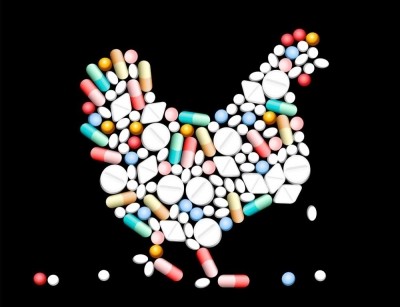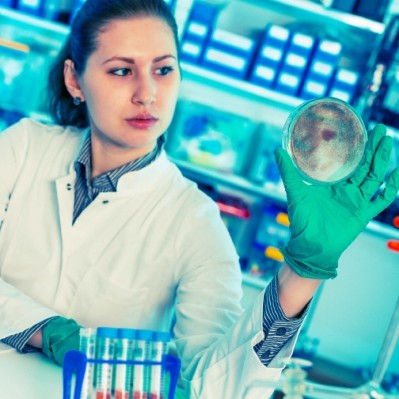Agricultural use of antibiotics set to grow by 2030

Currently it is estimated that livestock consume about 80% of antibiotics used annually in the US, they said in the recently released report, The State of the World’s Antibiotics 2015. Anticipated usage increases are being driven by demand for animal proteins and the transition to intensive agriculture.
“Antibiotic resistance is a direct result of antibiotic use,” the researchers said. “The greater the volume of antibiotics used, the greater the chances that antibiotic-resistant populations of bacteria will prevail in the contest for survival of the fittest at the bacterial level.”
Expected growth
One challenge in examining the interplay between use and effects of antibiotics in livestock is a dearth of information on global usage, said researchers. However, some data from high-income counties is available and CDDEP researchers used statistical models to create estimates for global antibiotic use in 2010 and predicted expected use in 2030.
Uncertainty remains about usage in low-income counties and more work is needed to understand those practices and offer guidance on boosting production without antibiotics, they added.
“Global antibiotic consumption in livestock was conservatively estimated at 63,200 tons in 2010, accounting for nearly two-thirds of the estimated 100,000 tons of antibiotics produced annually worldwide,” they said. “By 2030, consumption is projected to rise by two-thirds, to 105,600 tons.”
In 2010, it was predicted that China used about 15,000 tons of antibiotics in agriculture, that amount is expected to more than double reaching about 33,000 tons by 2030, researchers reported. The US is set to increase use from about 8,000 tons to 10,500 tons, Brazil is set to grow from about 5,000 to 9,000 tons, India from about 2,500 to 4,000 tons and Mexico from approximately 1,800 to 3,000 tons. Germany, which was estimated to use about 2,500 tons in 2010 is expected to have about the same level of use in 2030.
Approximate use levels by several other countries include: Spain at about 2,000 tons in 2010 with slight increases predicted, Russia at about 1,900 tons in 2010 moving to about 2,500 in 2030, France at about 1,700 tons with little use growth and Canada showing slightly less use than France and also remaining almost constant.
The five countries with the largest predicted increase in antibiotic use in livestock are China, Brazil, India, US and Indonesia, researchers added.
Antibiotic use
In animals antibiotics are used in three primary ways – to treat disease, to prevent disease and for growth promotion, said researchers.
“Antibiotic growth promotion is the focus of most legal and regulatory efforts to reduce animal antibiotic use because it provides no health benefit to the animals but accelerates antibiotic resistance,” they said. “Recent analyses suggest that growth promoters have a smaller effect on animal growth than assumed, particularly in production systems that are otherwise optimized.”
Antibiotic use in animals is expected to continue to increase unless preventative steps are taken, they said. Measures include teaching countries to develop their production methods and improving the availability of information regarding antibiotic usage.
Antibiotic resistance in livestock
Although there is no global picture taken of antibiotic resistance in food animals, the US and Europe regularly collect data, said researchers. And some information is gathered by the Global Antibiotic Resistance Partnership for countries including Nepal, Uganda, Tanzania and India.
In Europe, resistance of Salmonella and Campylobacter to several types of antibiotics has been reported. These include tetracyclines, sulfonamides, ampicillin, quinupristin/dalfopristin and quinolones.
In The US, a similar pattern of resistance to antibiotics including penicillin, sulfonamides, quinolones, quinupristin/dalfopristin and tetracyclines has been seen, researchers said.
“Proof that antibiotic use in animals (particularly for growth promotion, and to a lesser extent for prevention) has a significant effect on human health has been elusive but is growing,” said researchers. Resistance can be transmitted from animals to human in several ways, including directly, through animal food and foodborne infection outbreaks, they added.
Ways to curb use
Recent efforts in the US to decrease agricultural use of antibiotics saw the publication of voluntary guidelines by the Food and Drug Administration, said researchers. These have had some affect – in June of 2014 all drug manufacturers agreed to update product labels to exclude use for growth promotion and require a prescription, and by July of 2015 about 40 labels had been amended.
Canada started a similar program in 2014 and Mexico, South Korea and New Zealand have banned use of antibiotics for growth promotion, they said.
Additionally, if farm hygiene and vaccinations are improved in a country it can reduce the need for antibiotics to be used to prevent disease, said researchers.








